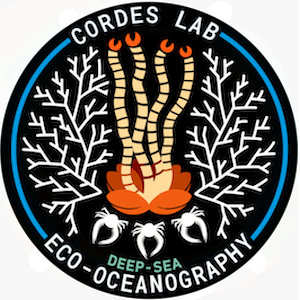Lophelia II: Reefs, Rigs, and Wrecks (MMS and NOAA OER)
Cruise Summary: September 20 – October 2, 2008
R/V Nancy Foster, ROV SeaEye Falcon
NOAA Ocean Explorer
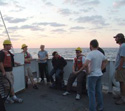
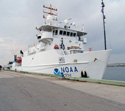
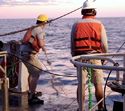
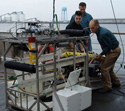
This cruise included 12 working days at sea with the SeaView Falcon II ROV operated by SeaVision Systems on board the NOAA Ship Nancy Foster. We departed out of Gulfport, MS and returned to Pascagoula, MS. We collected multibeam data at 13 sites and completed 10 ROV deployments over eight different sites. This was a successful reconnaissance cruise that explored a number of new sites in the Gulf of Mexico, gathered CTD and multibeam data at a number of sites, discovered new areas of L. pertusaabundance including one new site, and collected one gorgonian species not previously known from the Gulf of Mexico.
At Green Canyon (GC) 140, gorgonians and antipatharians were abundant, but no scleractianians (including Lophelia pertusa) were observed. Antipatharians were over 1-2 m tall and 2-3 m across, and hosted at least 10 different species directly on the skeleton or associated with the coral structure. At GC234, we found a new linear ridge feature that was a continuation to the north of the known coral ridge at that site. Exploration of this area revealed the presence of additional mounds and low-lying ridges colonized by L. pertusa, and we collected a specimen of Paragorgia sp., the first occurrence of this genus in the Gulf of Mexico. At Mississippi Canyon (MC) 751, a large area of carbonate outcrops was colonized by living L. pertusa as well as numerous species of gorgonians and antipatharians. The corals were generally on the tops of carbonate outcrops with tubeworms all around the edges, extending down into the sediments.
The final dive at a previously unexplored area of Viosca Knoll (VK) 906 revealed a long ridge system with gorgonian and antipatharian corals at the edge of another narrow canyon-like feature. We explored one of these mounds at the very end of the dive and it appeared to be composed of a combination of dead L. pertusa skeleton and carbonate rubble. There were some live L. pertusa colonies here as well, growing on rubble on a fairly flat seafloor. This type of habitat for L. pertusa has not been observed previously in the Gulf of Mexico, and should be another good target for future exploration and research.
